[Cable & Harness Defect] Cable Harness Testing for Mis-gripping of strands
Mis-gripping of strands is a processing error in manufacturing cables and harnesses. In this video, we will show you how this error occurs and inspections prevent outflows.
Why does "Mis-gripping of strands" occur?
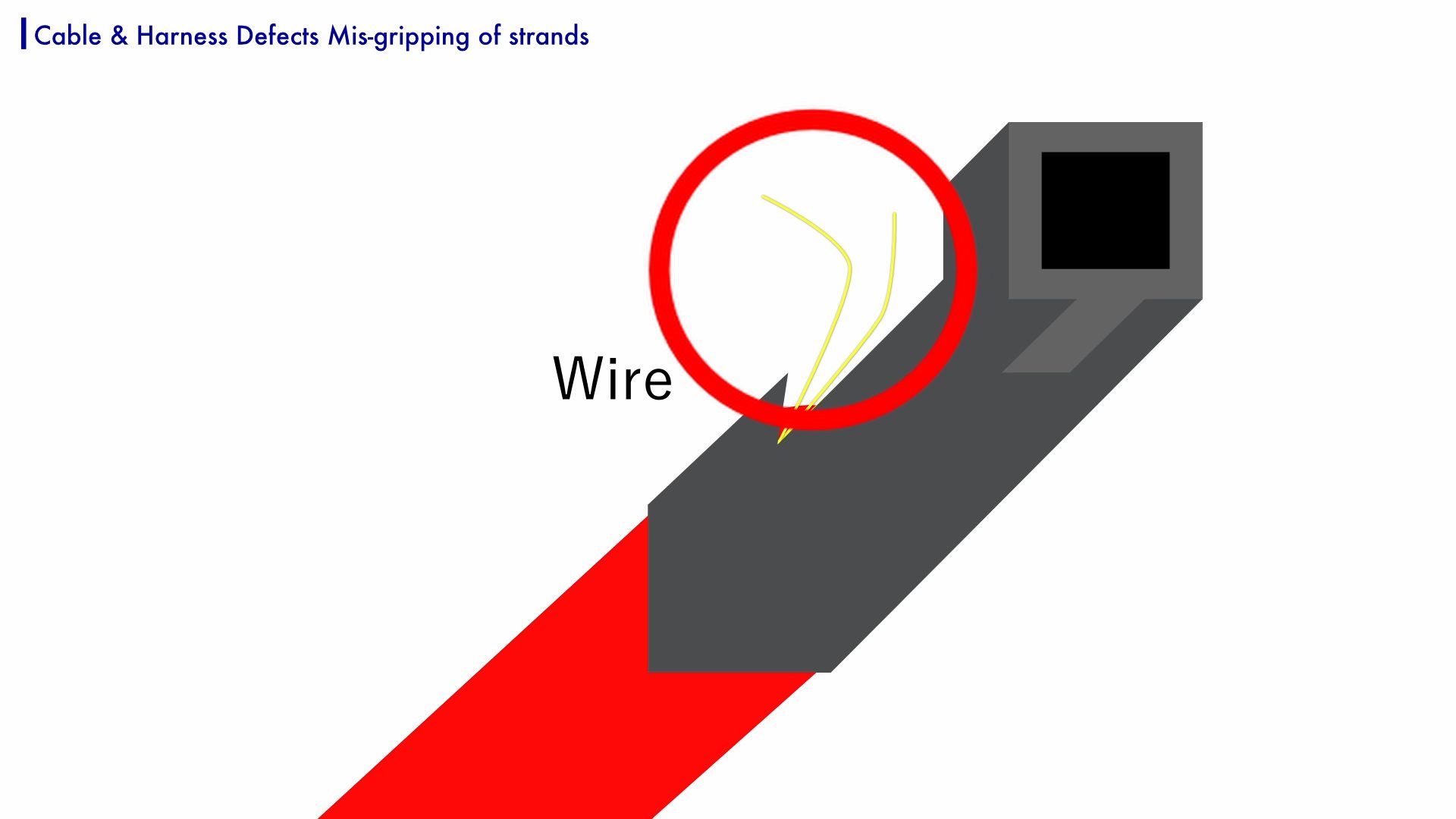
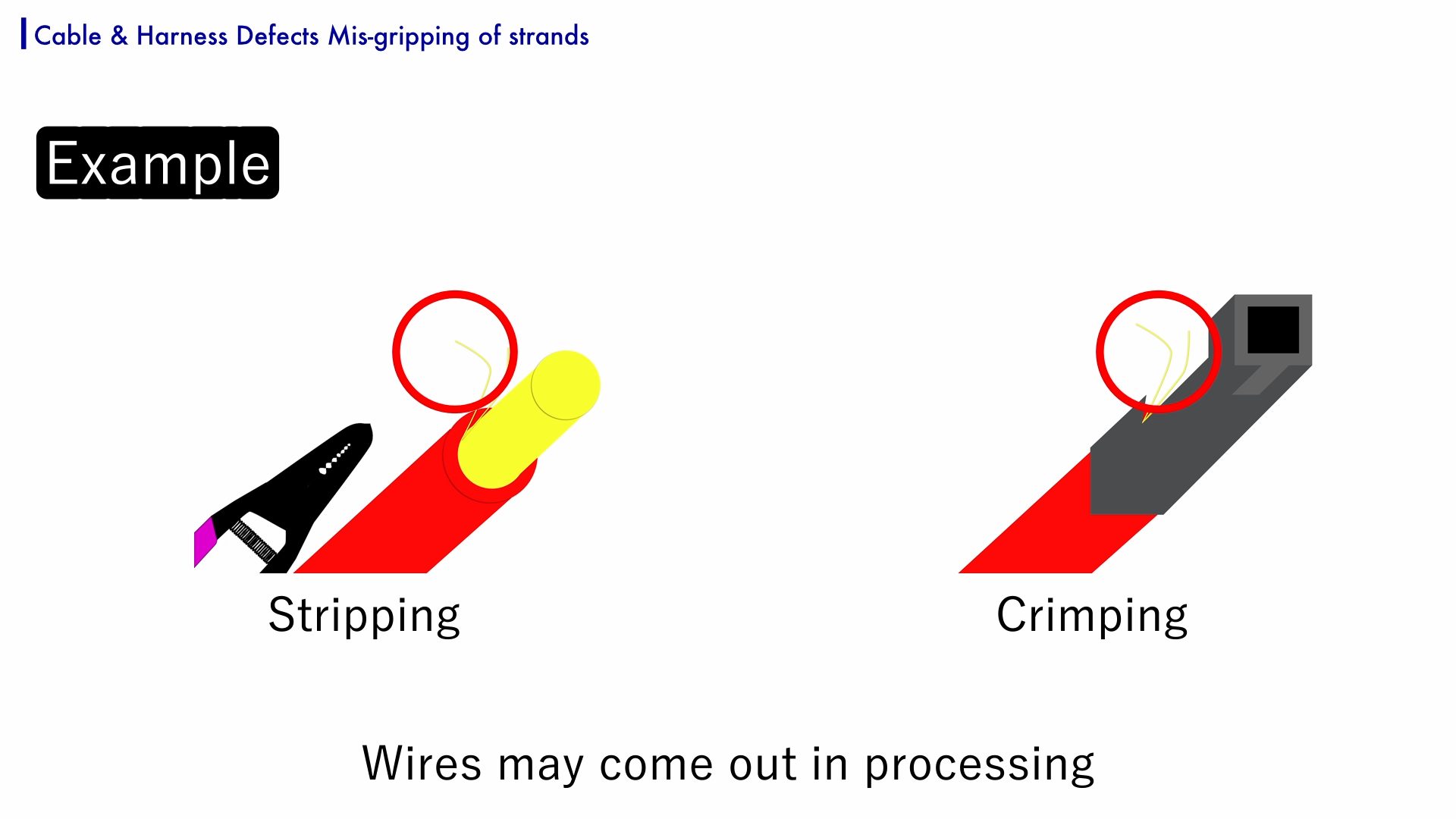
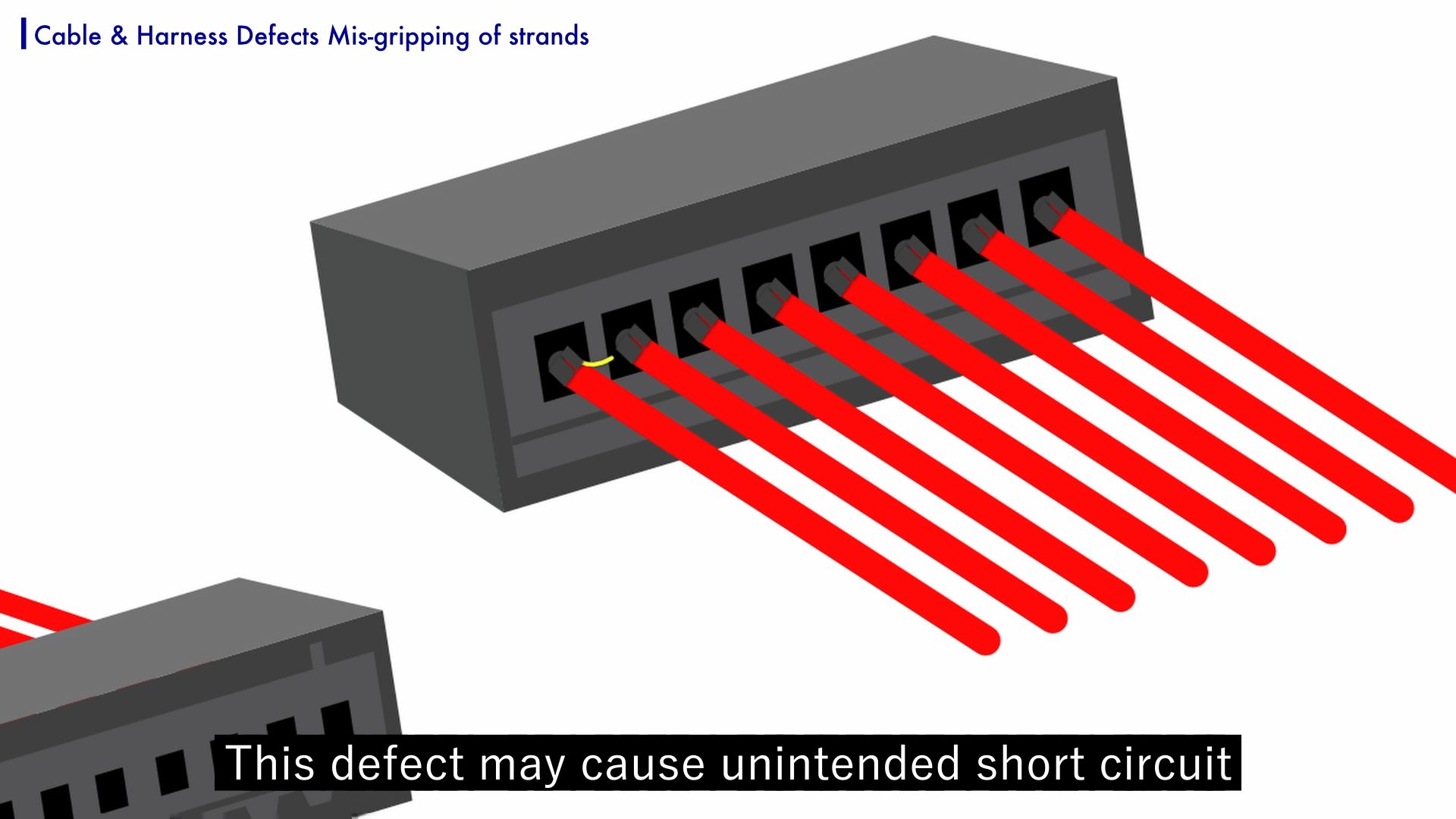
Mis-gripping of strands occurs when wires stripped or crimping are improper. This defect may cause unintended shorts. Assembled connectors are used in the automotive industry. Retainers are used to prevent semi-insertion. Mis-gripping of strands can cause entrapment of conductors, resulting in defects.
Methods to check the terminals
Crimp force monitor detects pressure changes in crimping. If the wires come out, the pressure changes and can be detected. A camera can also be used to detect the presence of the error optically. After the connector housing, the inside of the case can also be checked by X-ray.
Detection by electrical cable harness testing
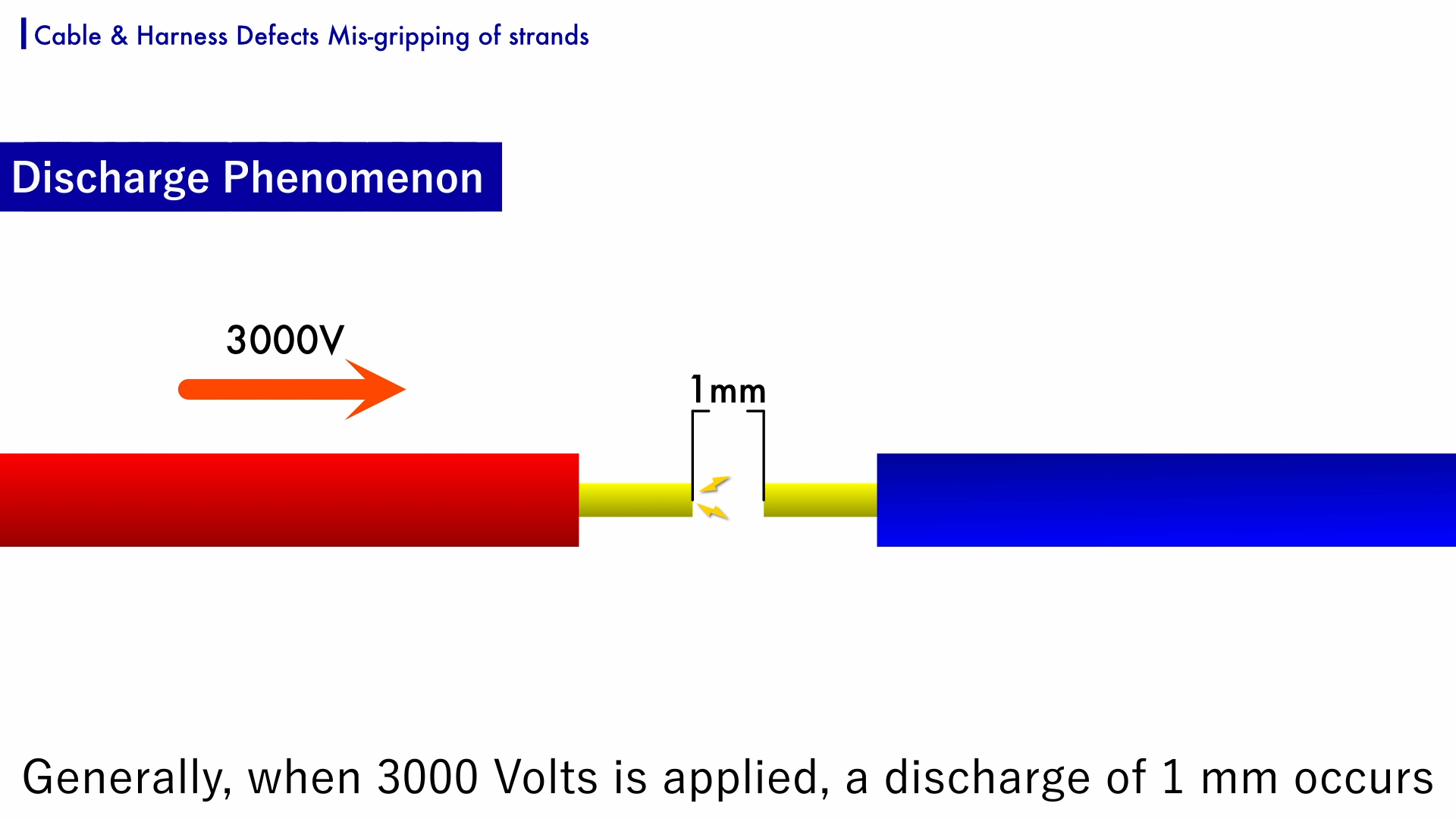
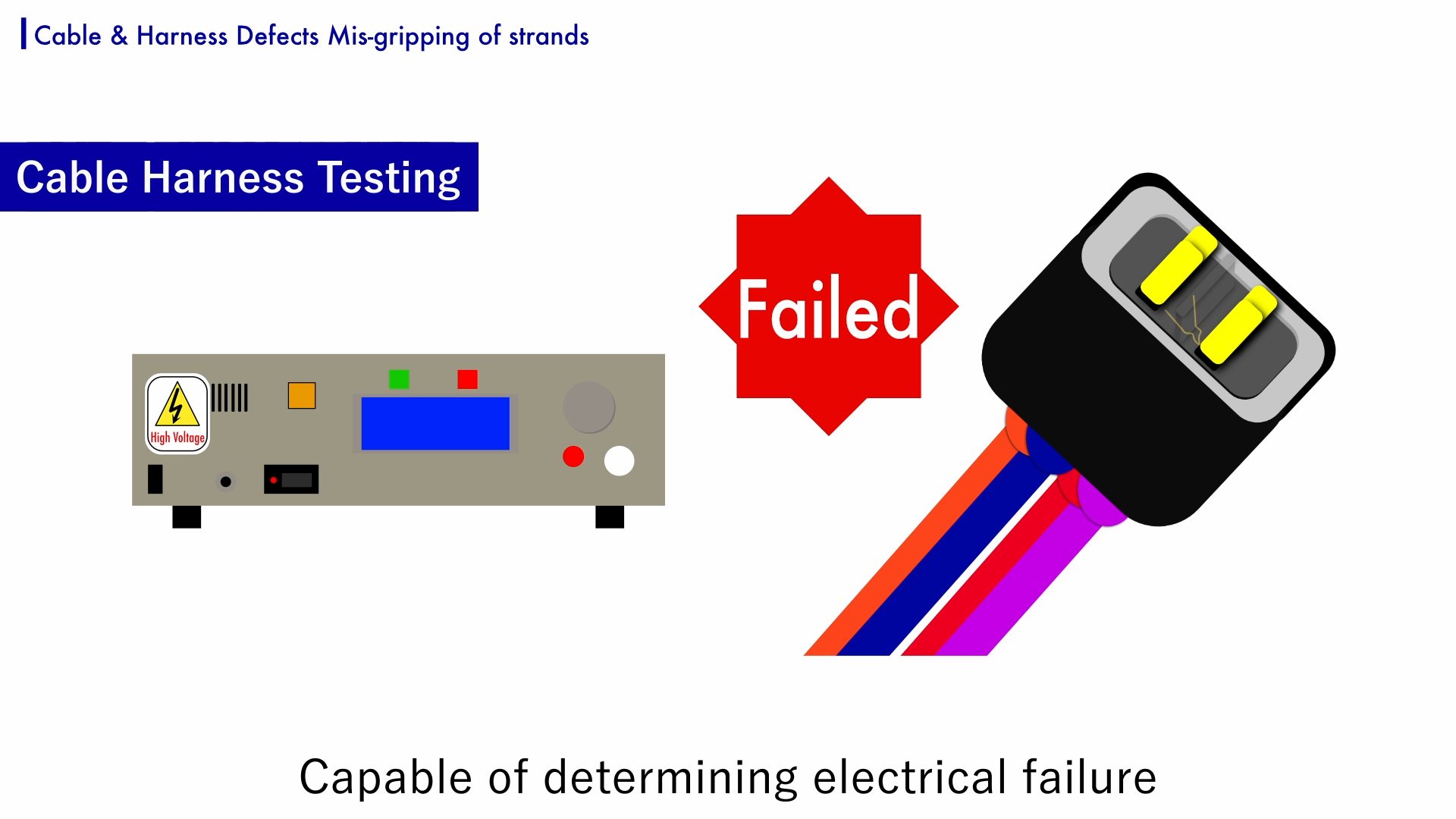
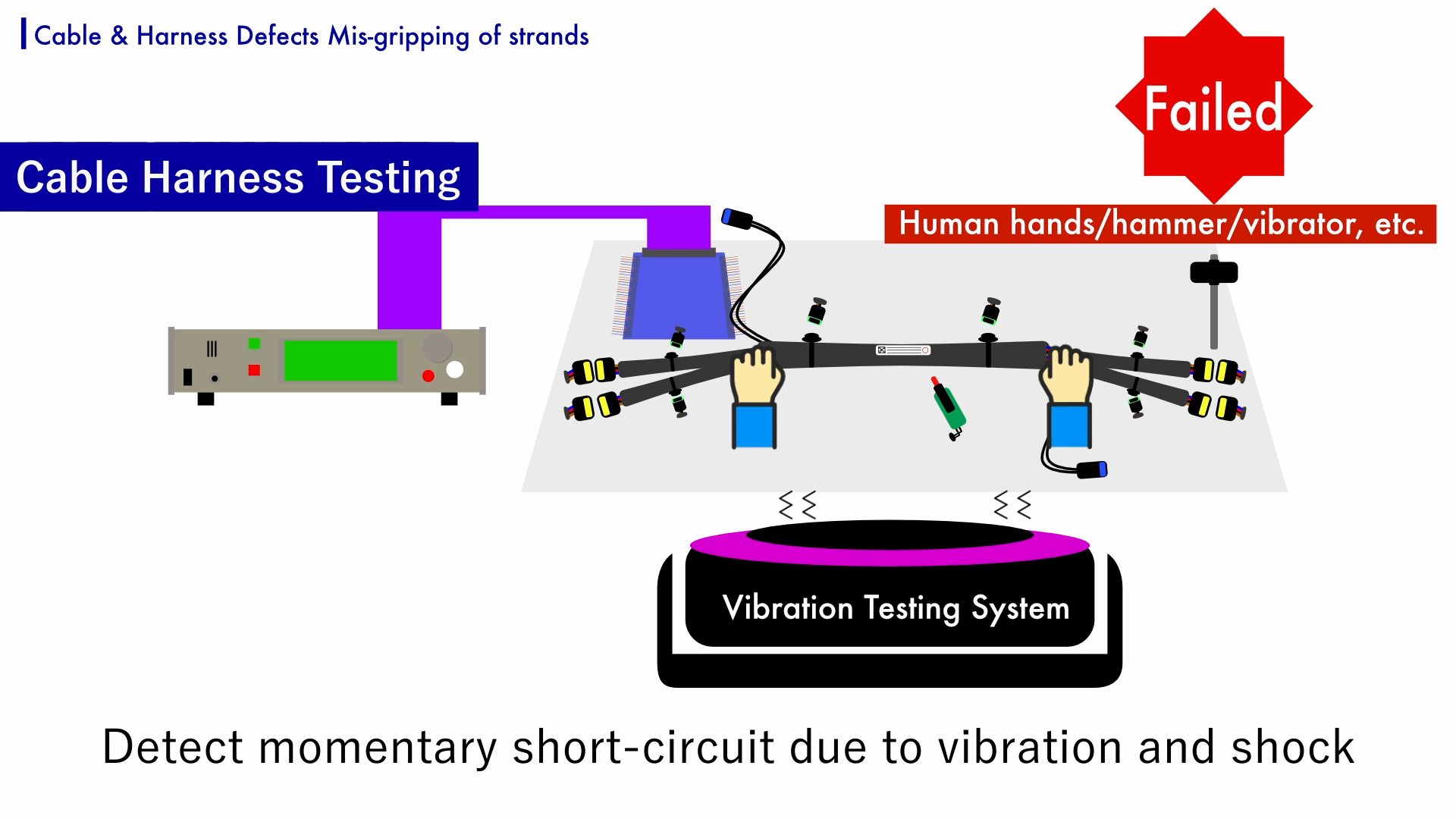
Electrical harness testing can detect if there are any error effects. If a short circuit is present, wiring testing can detect the error. An even higher quality test is to perform Dielectric withstand testing. Generally, when 3000 Volts is applied, a discharge of 1 mm occurs. In the Dielectric withstand testing, a high voltage is applied to the test target. It determines that there is no discharge phenomenon to other conductors. Electrical faults can be detected when wires are close to other conductors inside the connector. There are no eyes on the harness tester, so it cannot detect the presence or absence of wire coming out. Thus, it determines an electrical error. In some cases, a momentary short circuit can be detected as an error. Vibration or shock is applied to determine if a short circuit occurs. If the wire contacts different conductors, an error is determined. Dielectric Withstand testing can be performed with NMG+, NMK, and NMX, harness multi-testers. Momentary contact detection can be conducted with NMC Plus series. High-quality harness testing can be provided by the NACMAN series. Please feel free to contact us.
- Product Search
- Inspection Spec
- Category
- Options
- Discontinued Product
- All Products



